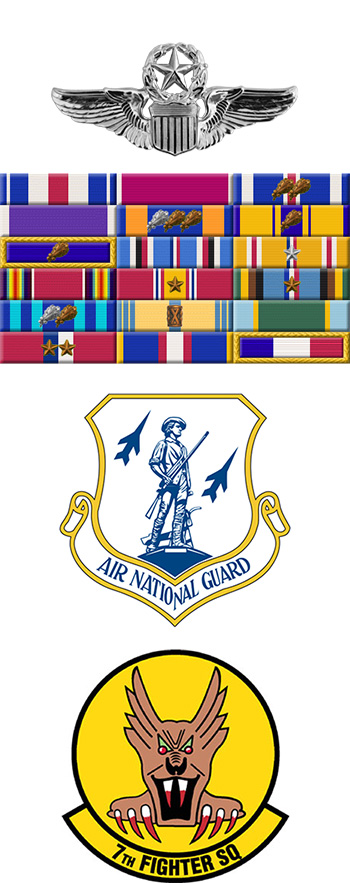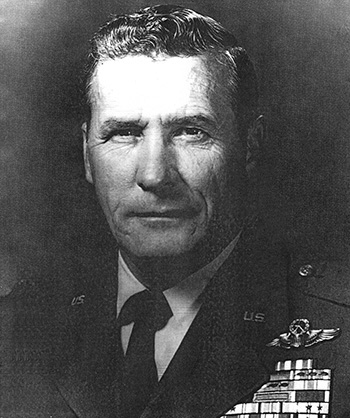
|
Joel B. Paris, III |
 |
|||
| Rank, Service | ||||
Colonel O-6, U.S. Air Force |
||||
| Veteran of: | ||||
|
||||
| Tribute: | ||||
Joel Paris was born on December 6, 1922, in Atlanta, Georgia. He enlisted in the Aviation Cadet Program of the U.S. Army Air Forces on March 12, 1942, and was commissioned a 2d Lt and awarded his pilot wings at Spence Field, Georgia, on February 16, 1943. Lt Paris served as an instructor pilot at Spence Field from February to March 1943, and then deployed to the Pacific, where he served as a P-40 Warhawk pilot with the 78th Fighter Squadron of the 15th Fighter Group in Hawaii from April to December 1943. His next assignment was as a P-38 Lightning pilot with the 7th Fighter Squadron of the 49th Fighter Group in New Guinea, the Netherlands East Indies, and in the Philippines from December 1943 to December 1944, followed by service as Operations Officer for the 49th Fighter Group in the Philippines from December 1944 to May 1945. During this time, Capt Paris was credited with the destruction of 9 enemy aircraft in aerial combat. After returning to the United States and taking leave, he served as an instructor pilot at Luke Field, Arizona, from August to October 1945, and then was on leave until leaving active duty on December 28, 1945. Capt Paris joined the Georgia Army National Guard on August 20, 1946, and served as a P-47 Thunderbolt pilot and Operations and Training Officer for the 128th Fighter Squadron at Marietta Army Airfield, Georgia, from August 1946 to June 1947. His next assignment was as Commanding Officer of the 116th Aircraft Control Squadron at Dobbins AFB, Georgia, from June 1947 to January 1951, followed by active duty service as Commander of the 116th Tactical Control Squadron in Tennessee from January 1951 to February 1952. Lt Col Paris remained on active duty as Operations and Training Officer for the 154th Air Control and Warning Group in Tennessee from February to June 1952, and then returned to the Georgia Air National Guard, where he served as Air Operations Officer for the 128th Fighter-Bomber Squadron at Dobbins AFB from July 1952 to March 1953. He served as Air Operations Officer for the 116th Fighter Bomber Group at Dobbins from March to June 1953, followed by service as Air Commander of the 128th Fighter Interceptor Squadron at Dobbins from June 1953 to June 1956. His last assignments with the Georgia Air National Guard were as Director of Material and then as Wing Executive with the 116th Fighter Interceptor Wing at Dobbins AFB from June 1956 until he returned to active duty in the Air Force on May 1, 1957. Col Paris next served as Assistant for Air National Guard Affairs with 14th Air Force at Robins AFB, Georgia, from May 1957 to July 1960, followed by service as Chief of the Air National Guard Affairs Branch with Headquarters Tactical Air Command at Langley AFB, Virginia, from July 1960 to January 1961. He served as Assistant Director of Tactical Evaluation with Headquarters Tactical Air Command at Langley from February 1961 to January 1962, and then as Special Assistant for Air National Guard Affairs with the 4450th Stan/Eval Group at Langley from January to December 1962. Col Paris next served as Chief of the Air National Guard Division with Headquarters Tactical Air Command at Langley from December 1962 to October 1963, followed by service as Director of Air National Guard Affairs with Headquarters Tactical Air Command from October 1963 to August 1968. His final assignment was as Assistant for Air National Guard Affairs in the Strike Forces Division at Headquarters U.S. Air Force in the Pentagon from August 1968 until his retirement from the Air Force on October 1, 1970. |
||||
|
||||

